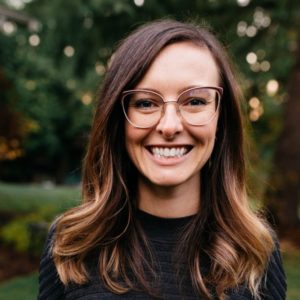ARCHITECTURE AS AN ART AND SCIENCE
Amy Perenchio, AIA, LEED AP BD + C
Principal
ZGF Architects, LLP
Portland, Oregon

Why did you become an architect?
I came to architecture in the second year of my university career because my first major, physics, did not provide the kind of creative outlet I needed. I had friends in the architecture program and thought their assignments looked like a ton of fun. I have found that architecture is the perfect opportunity to combine art and science, and to think creativity and logically to solve problems.
Why did you decide to choose the schools that you did – Washington State University and University of Oregon to attend for your architecture degree(s)? What degrees do you possess? Why did you attend different institutions for your degrees?
I chose Washington State University because it provides a high quality and well-rounded education. My parents and grandparents are also alumni, so you could say it was an easy choice.
I chose to attend another university for graduate studies because I wanted to broaden my education. I attended the University of Oregon's Portland Program because it was complementary to my experience at Washington State University. At the time, the Master of Architecture program had a focus on urban architecture (design and planning) and sustainability - both of which were topics I wanted to study in more depth.
Why did you choose to pursue the four+two year Master of Architecture degree?
I switched majors into Architecture at a university that only offered a four + two year track. Instead of transferring to a five-year Bachelor of Architecture program elsewhere, I decided to stay in the pre-professional program and pursue my Master of Architecture afterward.
Currently, you serve as a director on the National Architectural Accrediting Board; from your perspective, what is accreditation and why is it important for students to know about it.
Accreditation is a quality assurance process. It ensures that students graduate with a minimum required knowledge set to become an architect. Accreditation is important for students to know about because it directly imacts them. In most jurisdictions, a NAAB accredited degree is a prerequisite for licensure.
What has been your greatest challenge as an architect thus far?
My greatest challenge as an architect, thus far, has been appreciating a work life balance. I absolutely love what I do for a living. Finding ways to compliment my career with other fun things outside of architecture has been a big challenge, but also the most rewarding experience I’ve had as an intern. Allowing myself to enjoy time outside of the office has allowed me to live more fully, lower my stress, and perform at a much higher level when I am at work.
What is the most satisfying part of a career as an architect?
The most satisfying part of a career as an architect is that our ideas and hard work manifest themselves in reality. The Emery, a mixed-use residential building in the South Waterfront of Portland, is the first project that I have participated in the design process from start to finish. It is currently under construction, and each time I see it, I am amazed at how the walls and spaces we conceived of become tangible objects. Most of the spaces are just as I had imagined they would be, and others become a lesson for future projects. Being able to physically inhabit a space that I have designed and drawn is an amazingly rewarding and learning experience.
What are your 5-year and 10-year career goals relative to architecture?
In my career thus far, I have made the right decisions at critical junctures that have landed me to where I am today. I have general ideas of what I would like in my career but I won’t limit them to a time frame. For instance, I know that I want to be in a firm-wide management role, to be a meaningful mentor and someone who helps others excel in their architectural careers – but whether these are 2 or 10 years in my future is not known yet.
Who or what experience has been a major influence on your career?
My experience on the National AIAS and NAAB boards has shaped me personally and professionally in more ways than I can list here. Through my involvement in both organizations, I have been able to grow my perspective and gain a new appreciation for the profession.
Gene Sandoval, my mentor and Partner at ZGF, has been a major influence on my career. His careful prodding and expectation for high design thinking has significantly impacted my growth. From him, I have learned that buildings, like stories, need to be crafted with the utmost care.
